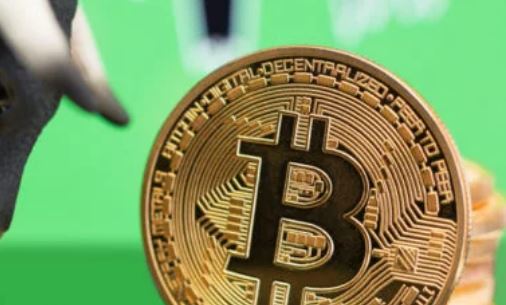Time to Decide: Are You an Investor or a Gambler?

A crash isn’t a great time to decide why you invested in the first place. But it’s better late than never.
Is crypto over? Is this the end of the world? And most importantly – will I ever eat steak again?
With bitcoin down about 13% in the last 24 hours, and closer to 34% for the week, these are questions that a lot of people are asking themselves for the very first time. 2020 and 2021 saw a huge wave of new entrants into cryptocurrency, thanks first to sheer boredom, followed by the kind of get-rich-quick rubbernecking that turns everyone into a crypto expert every three years or so. To pick just one metric out of a hat, active Bitcoin wallet addresses have grown by roughly 35% since the start of the pandemic in March of last year.
It’s inevitable that a lot of these new entrants still have a limited understanding of the extremely nuanced technology behind true cryptocurrencies, or of the speculative and often head-spinning theories about how and why they will transform society. It’s not surprising or even particularly blameworthy. Whether we’re talking about crypto or stocks, most people just want to go to the beach, eat some ice cream, and occasionally FOMO into a hot asset they heard about on the internet.
That is, of course, a great way to stay poor. But new entrants to the 2020 crypto bull market have been indoctrinated in an even better approach to losing all your money: speculative day trading. I might not go so far as to call him Patient Zero, but Barstool Sports CEO Dave Portnoy is certainly the most prominent and emblematic vector here. He started livestreaming his stock day trading early in the pandemic and then aped into crypto during the summer of 2020.
And I mean aped. Portnoy, to be fair, has been fairly self-aware about his dunderheaded crypto shenanigans, most recently declaring, “I have no idea how this works,” while putting $40,000 into alleged Ponzi scheme Safemoon on Tuesday. Now, 24 hours later, he’s down about $15k on that bet. Portnoy also sold all his bitcoin last August, at around $11,500, after holding it for a whole week. He then bought back bitcoin two weeks ago at $48,000.
I don’t have a total picture of Portnoy’s activity, and it’s extremely likely that the broader bull market has left him way, way up since last summer despite his complete lack of discipline. But viewed with an even slightly critical eye, Portnoy has been doing a one-man extended performance art piece about why, according to a 2016 survey of data from trading platform Etoro, 80% of private day traders lose money over the course of a year. The median 12-month return of all traders in the dataset – not just the ones who lost money – was a 36.3% loss.
Today’s massive crypto crash is a great illustration of why. Most day traders, even the most disciplined and rigorous, trade based on market sentiment, and “panic” is a pretty overwhelming sentiment. The playbook for a typical day trader, at a moment like this, screams “sell.”
MOST PRIVATE DAY TRADERS ARE THE MICROSCOPIC, TWITCHY, ANXIOUS KRILL THAT SLOW-MOVING WHALES SUCK DOWN FOR LUNCH
Meanwhile, longer-term investors use price dips to add to their holdings in assets they believe in long-term. That is the kernel of one of Warren Buffett’s most famous investment maxims: “Be fearful when others are greedy. Be greedy when others are fearful.” It’s why, in the ecology of asset markets well beyond crypto, most private day traders are the microscopic, twitchy, anxious krill that slow-moving whales suck down for lunch.
One caveat: There many individual day traders who make money trading even good old stocks. When it comes to crypto, the news-driven chaos creates tons of volatility, making it an even better way for truly skilled traders to profit. Traders also serve a far more useful function in highly speculative altcoin markets than in perhaps any other asset class, their “skin in the game” driving research, scrutiny, and price discovery of various projects. But it’s not something you should dabble in.
And today, with total crypto market cap down nearly 20%, is a good time for recent crypto entrants to consider whether they want to remain speculative traders or become investors.
Day traders bet on short-term changes in asset prices. Short-term trading momentum, these days, is usually driven by changes in sentiment more than by real changes in market conditions. As a day trader, you don’t care what a piece of news truly means, or even, ultimately, whether it’s true. You just care about guessing the next ten thousand traders’ reaction to it and positioning yourself to profit from it.
That approach is formalized in part through technical analysis, which is broadly touted as a way to measure and predict market sentiment. Technical analysis is explicitly framed as requiring little or no knowledge of the underlying asset – the chart tells the only story you want or need to know.
This is all in contrast with investment proper. Rather than focusing on sentiment, investors bet on how an asset will behave in the real economy. That generally means ignoring short-term fluctuations and heavily discounting market sentiment. There are grey areas, of course: Investors in tradeable “growth” assets like early-stage public companies have to do a subtle dance as they balance economic performance and market sentiment.
But most investors base their positions on a “thesis,” either about a company or a sector: a detailed, complex picture of what the future would look like if a company or project succeeds in its stated goals, and an evaluation of how likely that success is. That’s the source of the “target prices” issued by equity analysts, which project the price of a stock 12 months in the future. (Investments often have longer horizons – bitcoin being one – but generally professional investors don’t act on projections beyond two or three years out, precisely because they are based on real-world conditions that can’t be predicted.)
So today is the day to ask yourself: Why did you buy the crypto that’s currently destroying your hopes of ever owning a home, much less a Lambo? Did you have a thesis? And if so, has that thesis changed?
If you didn’t already have a thesis for your crypto investments, the middle of a crash is not a great time to seek one out. A thesis is your source of confidence and resolve as an investor, and it’s tough to build that airplane when you’re already at 5,000 feet and falling fast. Maybe your best bet for a good night’s sleep really is to sell everything.
But maybe you just need a reminder of why you’re here. I’ll give you four.
1) Despite the rise of racist, xenophobic despots worldwide, globalization isn’t going anywhere. There’s a strong case that crypto is in some instances a more effective medium of cross-border payment than the traditional banking system.
2) The pandemic has blown a huge crater in national budgets, increasing debt issuance and the threat of inflation, most importantly in the U.S. dollar. Personally I’m on the fence about the idea that bitcoin is an “inflation hedge,” but many believe it.
3) Decentralized finance, which uses the trustless base layer of blockchain and automated smart contracts to issue and service loans, grew by 7,239% between January 2020 and April 2021.
4) Cryptocurrency is the only viable 21st-century solution to financial censorship, a huge risk of the digital age that hands massive power to governments and private corporations, and which is only growing.
There’s plenty more. But if you need something to chant under your breath as you hover over that “buy” button in a sea of red, it’s a solid start.











Responses